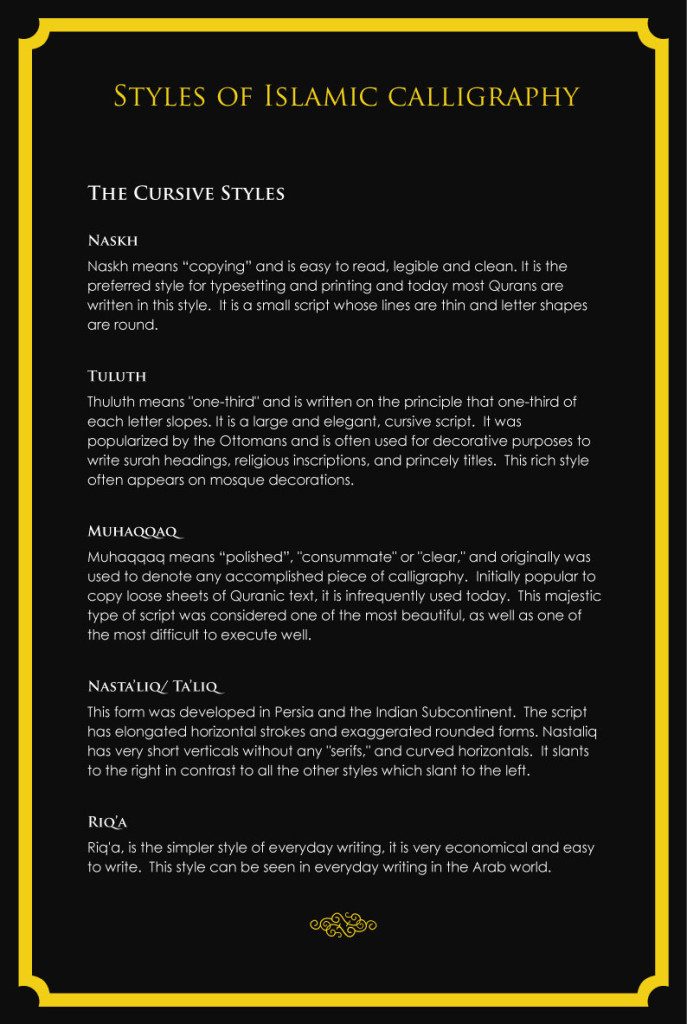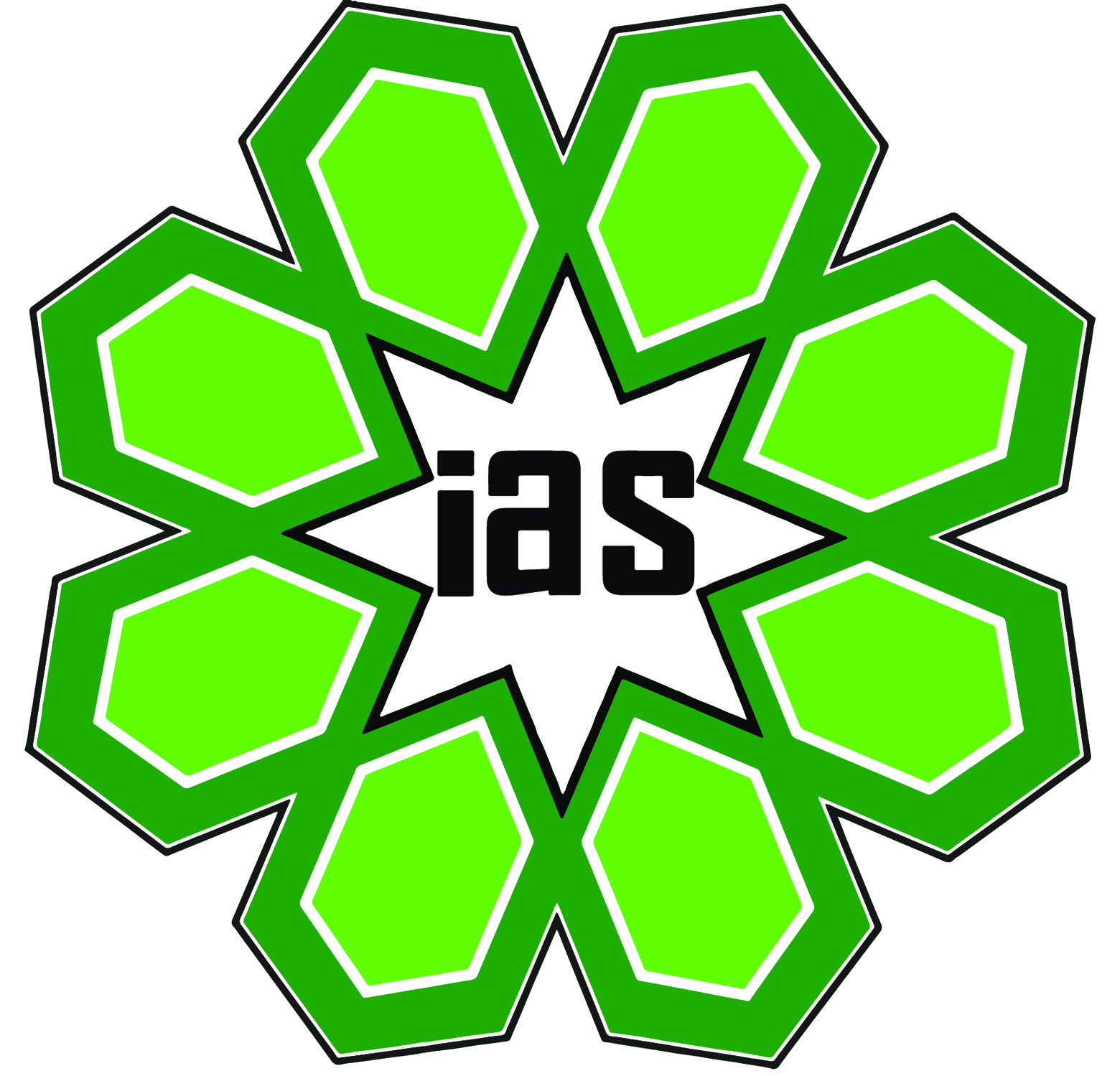STYLES OF ISLAMIC CALLIGRAPHY
KUFIC
The Kufic script was refined in the city of Kufah, Iraq. You will see this style in some of the earliest surviving copies of the Quran. The clean vertical strokes are short and the horizontal strokes are long and exaggerated. Bold circular forms appear between the horizontal and vertical lines. In Floral Kufic Serifs, leaf-like vegetal ornaments and flower buds are added to make the script more animate and decorative. In Knotted Kufic plaiting, knotting, and braiding is added to the vertical strokes.
NASKH
Naskh means “copying” and is easy to read, legible and clean. It is the preferred style for typesetting and printing and today most Qurans are written in this style. It is a small script whose lines are thin and letter shapes are round
TULUTH
Thuluth means “one-third” and is written on the principle that one-third of each letter slopes. It is a large and elegant, cursive script. It was popularized by the Ottoman’s and is often used for decorative purposes to write surah headings and princely titles. This rich style often appears on mosque decorations.
NASTA’LIQ/ TA’LIQ
This form was developed in Persia and the Subcontinent. The script has elongated horizontal strokes and exaggerated rounded forms. Nastaliq has very short verticals without any “serifs,” and curved horizontals.
RIQ’A
Riq’a, is the simpler style of everyday writing, it is very economical and easy to write. This style can be seen in everyday writing in the Arab world.
DIWANI
This form was developed by the Ottomans for decorative as well as communicative purposes. Diwani is distinguished by the complexity of the line within the letter and the close juxtaposition of the letters within the word.







